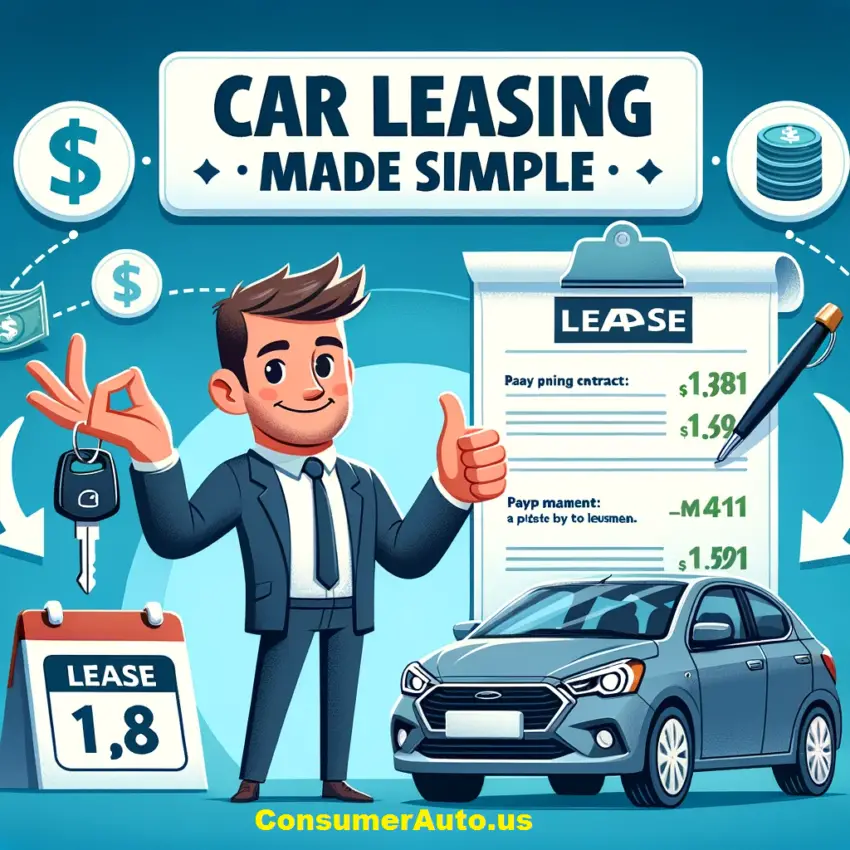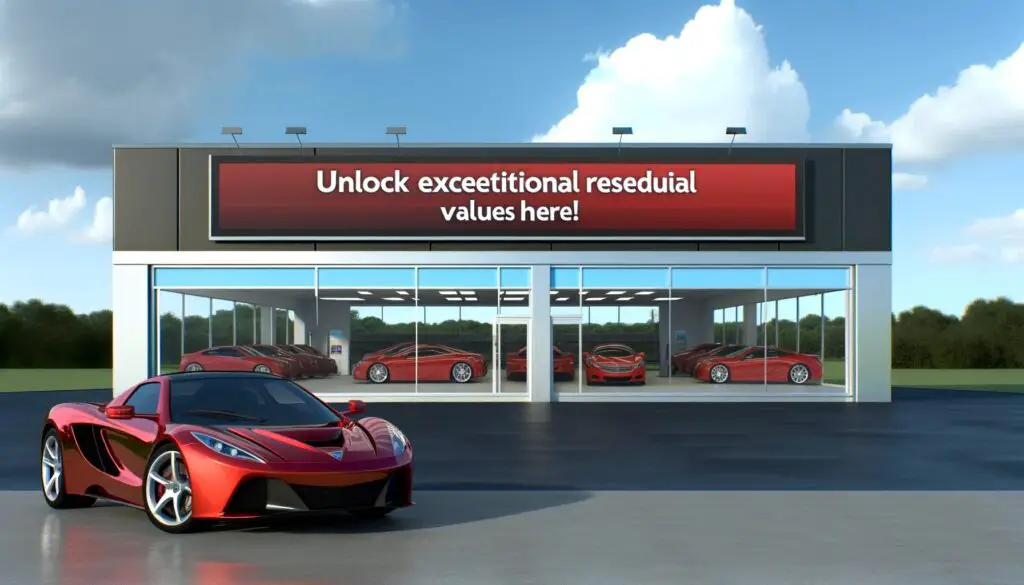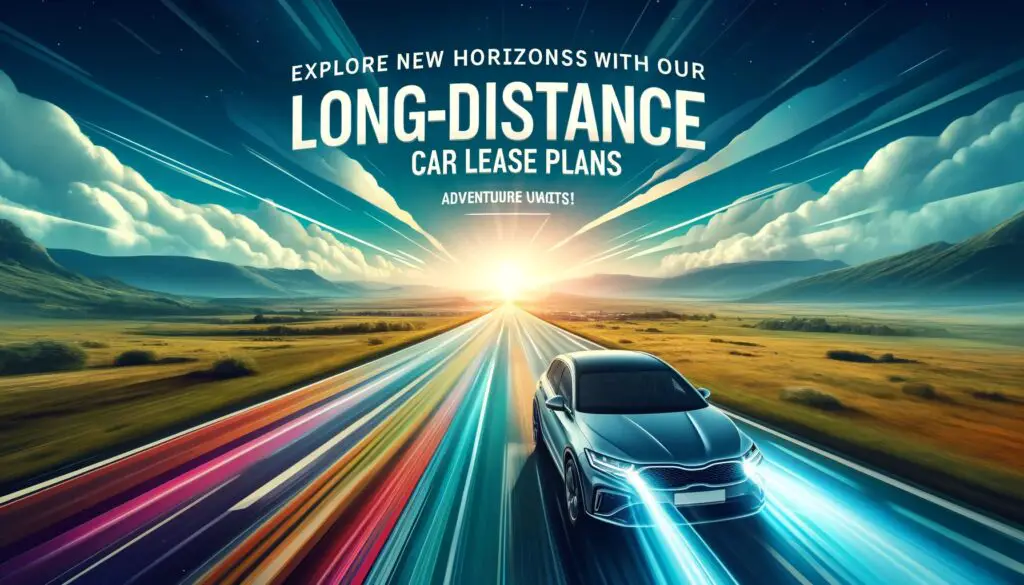I. Introduction
Car leasing is a popular alternative to buying a vehicle. It offers numerous advantages and disadvantages that potential lessees must consider. In this comprehensive guide, we will break down the intricacies of car leasing, providing you with a clear understanding of the process. Whether you’re new to the concept or looking to make an informed decision, this guide will equip you with the knowledge you need.
A. Explanation of Car Leasing
Car leasing is a contractual agreement that allows you to use a vehicle for a specified period, usually two to three years. Unlike traditional car ownership, where you fully own the vehicle, leasing involves making monthly payments based on the vehicle’s depreciation. Essentially, you’re paying for the car’s estimated loss in value during the lease term. This means you get to enjoy the benefits of a new vehicle without the long-term commitment of ownership.
B. Importance of Understanding the Process
Understanding the intricacies of car leasing is vital when considering this financial arrangement. Without a clear understanding, you may inadvertently choose a lease that doesn’t align with your needs or budget. This guide aims to empower you with the knowledge necessary to confidently navigate the world of car leasing, ensuring you make well-informed decisions throughout the process.
C. Brief Overview of What the Outline Will Cover
This comprehensive guide will provide insights into various aspects of car leasing to help you make informed decisions. It covers the following key topics:
- Types of Leases: Exploring different lease options, including open-end, closed-end, single-payment, and novated leases.
- Advantages and Disadvantages: A comprehensive review of the pros and cons of car leasing to help you assess its suitability for your situation.
- Leasing vs. Buying: Contrasting car leasing with traditional car ownership to assist you in making the right choice.
- The Leasing Process: Step-by-step guidance on how to lease a car, from preparation to lease agreement understanding.
- Lease Terms: A deep dive into essential lease terms such as monthly payment calculations, down payments, lease term lengths, mileage limits, and residual values.
- Maintenance and Repairs: Understanding your responsibilities for vehicle maintenance, repairs, warranty coverage, and maintenance packages.
- Returning the Leased Car: Insight into end-of-lease options, the lease return inspection process, addressing excess wear and tear, and preparing the car for return.
- Frequently Asked Questions: Answering common queries related to car leasing, from credit scores and negotiation to insurance, customization, accidents, and more.
This guide is designed to provide a comprehensive understanding of car leasing, equipping you with the knowledge needed to make informed decisions throughout the process.
II. Types of Car Leases
Car leasing offers various types of agreements, each with its own unique characteristics. Understanding these options is essential to select the one that best suits your needs and preferences.
A. Open-end Lease
An open-end lease is a flexible arrangement that allows you to purchase the vehicle at the end of the lease term, typically at its market value. While it offers the advantage of ownership, it also comes with financial risks. If the car’s value is less than anticipated, you may have to cover the shortfall, making it essential to stay informed about the vehicle’s market value.
B. Closed-end Lease
Closed-end leases are more common and offer fixed terms. At the end of the lease, you have the option to return the vehicle. Any difference between the car’s value and the predetermined residual value (the estimated value of the car at the end of the lease) is typically covered by the leasing company. This type provides more predictability and less financial risk.
C. Single-payment Lease
Single-payment leases involve making a one-time upfront payment, eliminating the need for monthly installments. This option is ideal for those who prefer to pay in full and avoid ongoing monthly financial commitments.
D. Novated Lease
A novated lease is a unique arrangement where your employer takes responsibility for lease payments. It’s particularly popular in some regions and can provide financial advantages for employees. Your lease payments are deducted from your pre-tax income, potentially reducing your taxable income.
E. Explaining the Differences
To help you make an informed choice, we will delve into the specifics of each lease type, highlighting their respective advantages and disadvantages. This knowledge will empower you to select the lease that aligns best with your lifestyle and financial situation, ensuring that you get the most out of your car leasing experience.
III. Advantages of Car Leasing
Car leasing presents several advantages that make it an appealing option for many individuals and businesses. Understanding these benefits can help you make an informed decision about whether leasing is the right choice for you.
A. Lower Initial Costs
One of the primary attractions of car leasing is the lower initial costs. When you lease a vehicle, the upfront expenses are considerably more affordable compared to purchasing a car outright. This makes leasing an attractive option for individuals with limited cash on hand, allowing them to access a new vehicle without a substantial down payment.
B. Lower Monthly Payments
In addition to lower initial costs, car leasing also offers lower monthly payments in comparison to loan payments for the same vehicle. This can provide significant financial relief, as your monthly budget is less strained, and you can allocate your resources more efficiently.
C. Warranty Coverage
Most leased cars are under warranty throughout the lease term. This means that the cost of maintenance and potential repairs is typically covered by the manufacturer’s warranty. This warranty coverage reduces your out-of-pocket expenses and offers peace of mind, knowing that unexpected repair costs are minimized.
D. Always Driving a New Car
Lease agreements typically last for two to three years, allowing you to drive the latest vehicle models with advanced features. This advantage ensures that you’re continually behind the wheel of a modern and well-equipped car, enjoying the latest technology, safety features, and improved fuel efficiency.
E. Tax Benefits
For businesses, car leasing can come with tax benefits. Lease payments are often tax-deductible as a business expense. This can lead to reduced taxable income and potential savings, making car leasing an attractive option for companies looking to manage their finances effectively.
F. Discussing Each Advantage in Detail
To provide a comprehensive understanding of the advantages of car leasing, we will delve into each of these benefits, offering real-life scenarios and examples to illustrate how they can positively impact your personal or business finances. This detailed exploration will help you make an informed decision and leverage the advantages of car leasing to your advantage.
IV. Disadvantages of Car Leasing
A. Mileage Restrictions
Lease agreements often come with mileage limits, and exceeding these limits can result in costly fees.
B. Maintenance and Repairs
Routine maintenance responsibilities can be restrictive, and lessees must follow the manufacturer’s service schedule.
C. No Ownership
Unlike purchasing, you don’t own the vehicle, and you won’t build equity over time.
D. Early Termination Fees
Terminating a lease early can be expensive, and lessees need to understand the implications.
E. Exploring Each Disadvantage in Detail
We’ll address each disadvantage in-depth, providing insights on how to mitigate potential issues.
V. Leasing vs. Buying
A. Contrasting Car Leasing and Car Buying
We will compare and contrast car leasing and car buying, helping you determine which approach aligns with your needs.
B. Pros and Cons of Each Approach
Both leasing and buying have their pros and cons. We’ll break down these factors, so you can make an informed decision.
C. Helping Readers Make an Informed Decision
Ultimately, our goal is to provide you with the information you need to make the right choice for your unique situation.
VI. How to Lease a Car
A. Steps Involved in the Leasing Process
We will guide you through the entire leasing process, from research to driving off the lot.
B. Preparing for Car Leasing
Proper preparation is key to securing the best lease terms. We’ll outline the steps you should take before heading to the dealership.
C. Finding the Right Car Dealership
Choosing the right dealership is crucial. We’ll offer tips for finding a reputable and trustworthy dealer.
D. Negotiating the Terms of the Lease
Effective negotiation can save you money and provide you with a lease that meets your needs.
E. Understanding the Lease Agreement
Understanding the fine print of your lease agreement is vital to avoid surprises down the road.
VII. Understanding Lease Terms
A. Monthly Payment Calculation
We’ll break down how monthly lease payments are calculated, including factors such as depreciation and interest.
B. Down Payment and Security Deposit
We’ll explain the role of down payments and security deposits and how they affect your lease.
C. Lease Term Length
The duration of your lease impacts your financial commitment. We’ll explore the factors to consider.
D. Mileage Limits and Excess Mileage Charges
Mileage restrictions are a critical aspect of leasing. We’ll clarify how they work and what happens if you exceed them.
E. Residual Value
Residual value plays a significant role in lease calculations. We’ll demystify its importance.
F. Interest Rates and Fees
Understanding the financial aspects of leasing, including interest rates and potential fees, is essential.
VIII. Maintenance and Repairs
A. Routine Maintenance Responsibilities
Lessees have certain maintenance obligations. We’ll detail these and provide tips for compliance.
B. Handling Unexpected Repairs
Emergencies can happen. We’ll discuss how unexpected repairs are addressed in a leased vehicle.
C. Warranty Coverage and Maintenance Packages
Warranty coverage can be a lifesaver. We’ll explain what to expect and how maintenance packages work.
IX. Returning the Leased Car
A. End-of-Lease Options
When your lease ends, you have several options. We’ll discuss each one, allowing you to make an informed decision.
B. Lease Return Inspection
What to expect during the lease return inspection and how to prepare for it.
C. Excess Wear and Tear
We’ll explain what constitutes excess wear and tear and how to address it.
D. Preparing the Car for Return
Tips for ensuring a smooth and hassle-free lease return process.
X. Frequently Asked Questions (FAQs)
We’ve compiled a list of frequently asked questions related to car leasing to address common concerns and misconceptions.
A. What is the Minimum Credit Score for Car Leasing?
The minimum credit score for car leasing can vary, but generally, a credit score of 620 or higher is considered good. However, some leasing companies may accept scores as low as 580. A higher credit score often leads to better lease terms and lower interest rates.
B. Can You Negotiate a Car Lease?
Yes, you can negotiate a car lease. Negotiable aspects include the vehicle’s price, lease term, down payment, and interest rate. Be prepared to haggle and compare offers from different dealerships to secure the best deal.
C. Are There Ways to Avoid Excess Mileage Charges?
To avoid excess mileage charges, you can either estimate your annual mileage accurately or choose a lease with a higher mileage allowance. Additionally, consider driving less or using public transportation when possible to stay within your lease limits.
D. How Does Insurance Work with Leased Cars?
When you lease a car, you must have comprehensive insurance coverage that includes liability, collision, and comprehensive insurance. The leasing company may have specific insurance requirements, so it’s essential to comply with their terms.
E. Can You Buy the Leased Car at the End of the Lease?
Yes, you can typically purchase the leased car at the end of the lease. The purchase price is predetermined in the lease agreement and is often based on the vehicle’s estimated residual value.
F. What Happens If I Want to Terminate the Lease Early?
If you want to terminate the lease early, you will likely incur early termination fees. These fees can be significant, so it’s important to carefully consider the financial implications before ending the lease prematurely.
G. Do I Need to Make a Down Payment When Leasing a Car?
While down payments are not always required for car leases, making one can reduce your monthly lease payments. However, it’s important to weigh the pros and cons and consider your budget before deciding.
H. How Does a Novated Lease Differ from a Traditional Lease?
A novated lease is an arrangement where your employer takes responsibility for lease payments using your pre-tax income. It’s commonly used in some regions as an employee benefit, while a traditional lease involves you making lease payments with your post-tax income.
I. What Are the Tax Implications of Leasing a Car?
The tax implications of leasing a car can vary based on your location and personal circumstances. In some cases, lease payments may be tax-deductible for businesses. Consult a tax professional to understand how leasing may affect your specific tax situation.
J. Can I Customize a Leased Car?
Customizing a leased car is generally allowed, but it’s important to check your lease agreement for any restrictions. Keep in mind that any modifications should be reversible to return the car in its original condition.
K. What Happens If the Leased Car Gets into an Accident?
If the leased car is involved in an accident, insurance typically covers the repairs. However, you may be responsible for any deductible amounts specified in your insurance policy. Ensure you report the accident promptly to your insurance company and the leasing company.
L. Can I Transfer My Lease to Someone Else?
Yes, you can often transfer your lease to someone else, known as lease assumption. The process may involve credit approval for the new lessee and a transfer fee. Check your lease agreement for specific details.
M. What If I Exceed the Mileage Limit?
If you exceed the mileage limit on your lease, you will be charged excess mileage fees, typically assessed on a per-mile basis. These fees can add up quickly, so it’s essential to monitor your mileage and plan accordingly.
N. Is Gap Insurance Necessary for a Leased Car?
Gap insurance is highly recommended for leased cars. It covers the difference between the car’s current value and the amount you owe on the lease if the car is totaled or stolen. Without gap insurance, you may have to pay this difference out of pocket.
O. What Happens at the End of the Lease If the Car’s Value Is Higher Than Expected?
If the car’s value is higher than expected at the end of the lease, you may have the option to purchase the vehicle at the predetermined residual value. This can be a great opportunity to buy a car you’re already familiar with.
P. Can I Negotiate on the Purchase Price of the Leased Car?
The purchase price of a leased car is typically set in the lease agreement and may not be negotiable. However, it’s always worth discussing this with the leasing company to see if there’s any flexibility.
Q. Can I Modify the Leased Car’s Appearance?
Modifying a leased car’s appearance is usually allowed, but it should be reversible, so you can return the car in its original condition at the end of the lease.
R. What If I Want to Keep the Leased Car Beyond the Lease Term?
If you want to keep the leased car beyond the lease term, you typically have the option to purchase it at the predetermined residual value. This allows you to continue driving the vehicle you’ve grown accustomed to.
S. Is It Possible to Lease a Used Car?
Yes, it is possible to lease a used car, but not all dealerships offer this option. Lease terms for used cars may differ from those of new cars, so it’s important to inquire with the dealership about their specific used car leasing programs.
T. How Does My Credit Score Affect the Lease Terms?
Your credit score plays a significant role in lease terms. A higher credit score often leads to better lease deals with lower interest rates and more favorable terms. Lower credit scores may result in higher monthly payments and potentially stricter lease conditions.
These FAQs provide valuable information to help you navigate the world of car leasing and make informed decisions.
XI. Conclusion
A. Summarize Key Points
In summary, car leasing can be an excellent option if you understand the process and its implications.
B. Encourage Informed Decision-Making
We encourage you to take your time, weigh the pros and cons, and make an informed decision based on your individual needs.
C. Emphasize the Importance of Reading and Understanding the Lease Agreement
Finally, we stress the importance of reading and comprehending every detail of your lease agreement to avoid surprises and ensure a successful leasing experience.
By following this comprehensive guide, you’ll be well-equipped to navigate the world of car leasing and make a choice that suits your lifestyle and budget. Whether it’s understanding lease types, calculating costs, or preparing for lease return, we’ve got you covered. Make your car leasing experience a smooth and informed journey.





